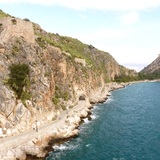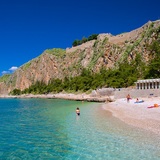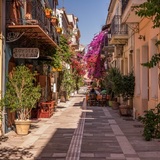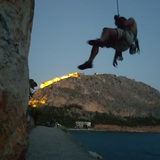Acronafplia is locaded along the coast of Nafplio and all the crags are in a fantastic seaside locations, thats why you should have always your swimming gear with you!
The crag is right under the romantic promenade which many locals use for their daly walk, jogging or cycling.
Easy you get in contact with the locals and they are always ready for a smal talk.
The crag offers you a variety of climbing styles and is worth it to visit.
A good place to be in the winter or cold days .
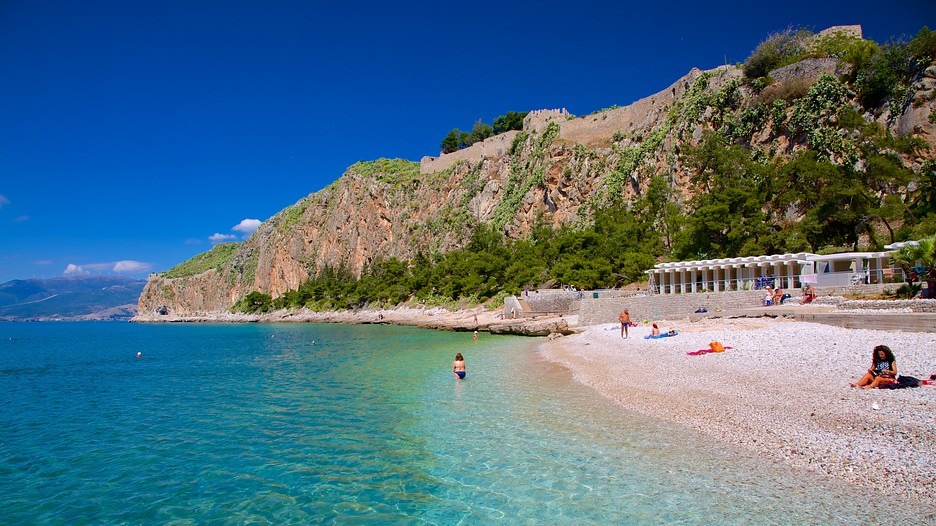
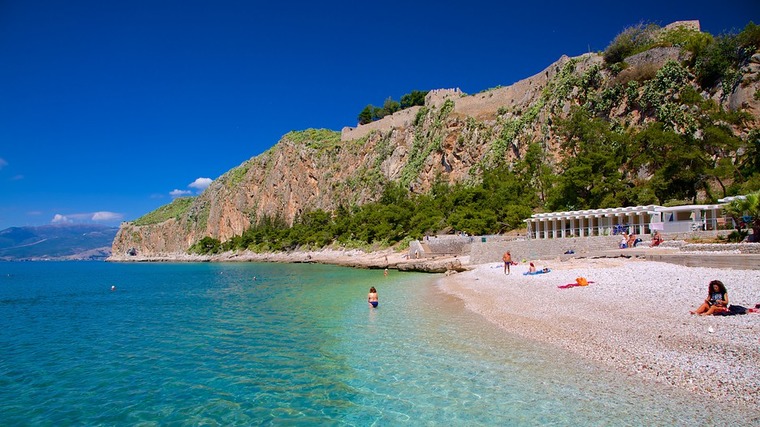
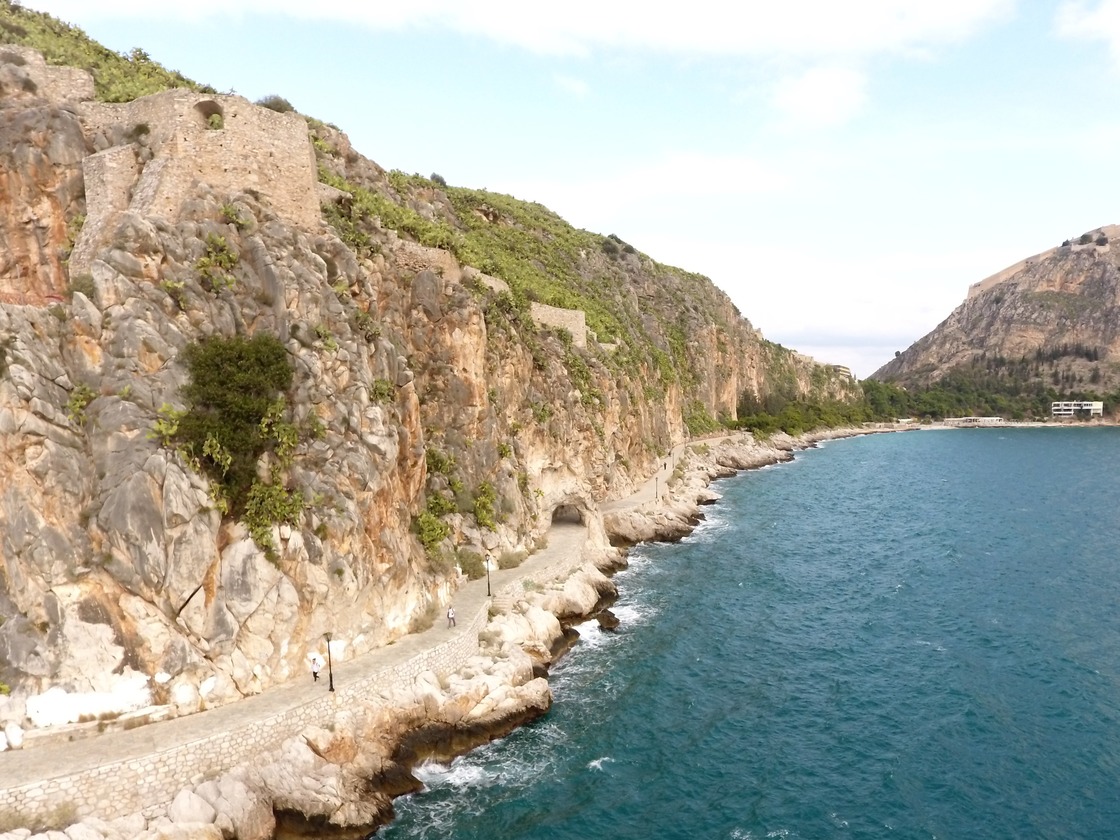
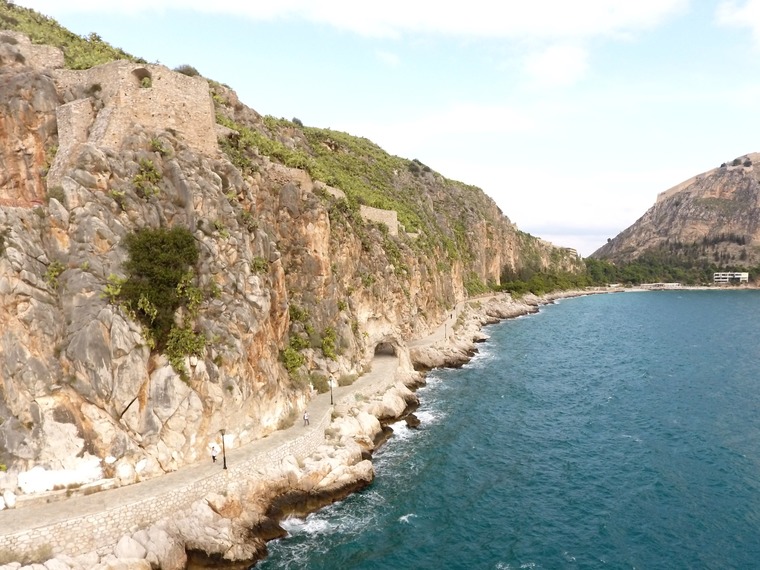
Classical antiquity
The area surrounding Nafplio has been inhabited since ancient times, but few signs of this, aside from the walls of the Acronauplia, remain visible. The town has been a stronghold on several occasions during Classical Antiquity. It seems to be mentioned on an Egyptian funerary inscription of Amenophis III as Nuplija.
Byzantine and Frankish rule
Further information: Byzantine Greece, Frankokratia, and Lordship of Argos and Nauplia
The castle of Palamidi
View of Bourtzi.
Map of the city of Nafplion (Napoli di Romania), 1597.
The Entry of King Otto into Nauplia by Peter von Hess
The Acronauplia has walls dating from pre-classical times. Subsequently, Byzantines, Franks, Venetians, and Turks added to the fortifications. Nafplio was taken in 1212 by French crusaders of the Principality of Achaea. It became part of the lordship of Argos and Nauplia, which in 1388 was sold to the Republic of Venice. During the subsequent 150 years, the lower city was expanded and fortified, and new fortifications added to Acronauplia.
Venetian and Ottoman rule
Further information: Stato da Màr and Ottoman Greece
The city surrendered to the Ottomans in 1540, who renamed it Mora Yenişehri and established it as the seat of a sanjak. At that period, Nafplio looked very much like the 16th century image shown below to the right.
The Venetians retook Nafplio in 1685 and made it the capital of their "Kingdom of the Morea". The city was strengthened by building the castle of Palamidi, which was in fact the last major construction of the Venetian empire overseas. However, only 80 soldiers were assigned to defend the city and it was easily retaken by the Ottomans in 1715. Palamidi is located on a hill north of the old town. During the Greek War of Independence, it played a major role. It was captured by Staikos Staikopoulos in November 1822.
19th century.
During the Greek War of Independence, Nafplio was a major Ottoman stronghold and was besieged for more than a year. The town finally surrendered on account of forced starvation. After its capture, because of its strong fortifications, it became the seat of the provisional government of Greece.
Count Ioannis Kapodistrias, first head of state of newly liberated Greece, set foot on the Greek mainland for the first time in Nafplio on 7 January 1828 and made it the official capital of Greece in 1829. He was assassinated on 9 October 1831 by members of the Mavromichalis family, on the steps of the church of Saint Spyridon in Nafplio. After his assassination, a period of anarchy followed, until the arrival of King Otto and the establishment of the new Kingdom of Greece. Nafplio remained the capital of the kingdom until 1834, when King Otto decided to move the capital to Athens.
20th and 21st centuries
Tourism emerged slowly in the 1960s, but not to the same degree as some other Greek areas. Nevertheless, it tends to attract a number of tourists from Germany and the Scandinavian countries in particular. Nafplio enjoys a very sunny and mild climate, even by Greek standards, and as a consequence has become a popular day or weekend road-trip destination for Athenians in wintertime.
Nafplio is a port, with fishing and transport ongoing, although the primary source of local employment currently is tourism, with two beaches on the other side of the peninsula from the main body of the town and a large amount of local accommodation.
The building of the National Bank of Greece is probably the only one in the world to have been built in the Mycenaean Revival architectural style.
